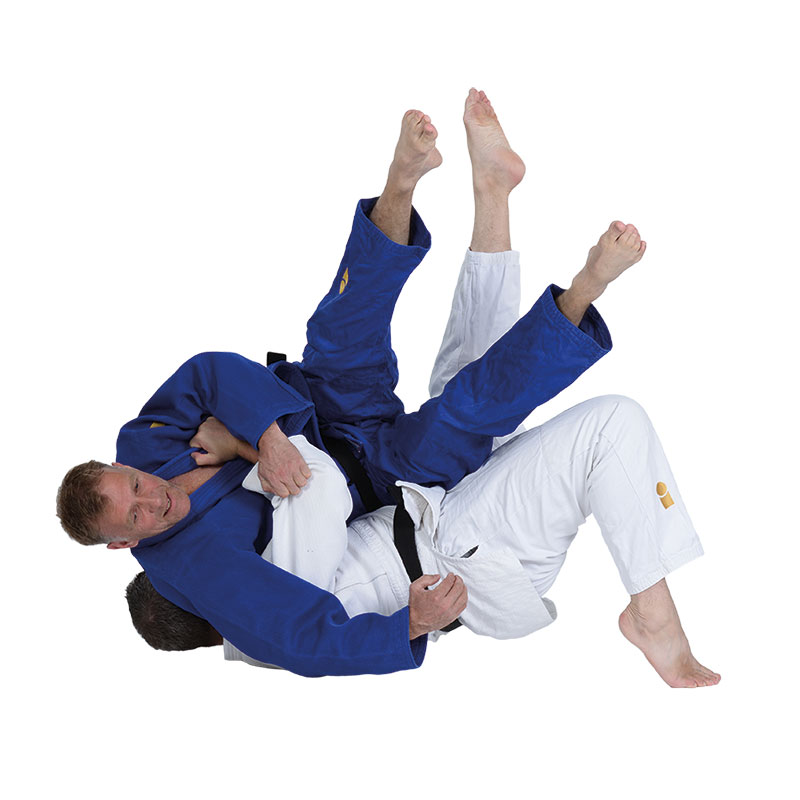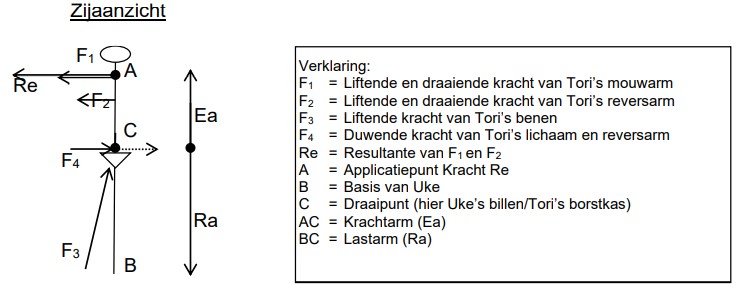Daki-wakare 抱分
Body Separation Throw (from a Bear Hug)
Classification: Sacrifice Technique (Sutemi-waza) – Sideways (Yoko-sutemi)
Group: Gokyo no Waza – Dai Gokyo (Fifth Group)
Description
A powerful sacrifice technique executed when your opponent (uke) drops to their knees or attempts to assume a turtle-like position facing the mat. Tori immediately responds by slipping both arms around uke’s waist from behind, hugging the torso tightly. Using momentum and body rotation, tori lifts uke and rotates to the side, throwing uke sideways and slightly backward over their own body.
Daki-wakare is an excellent counter when uke is in a low posture and trying to avoid further engagement. Timing and precision are crucial—if uke anticipates the movement, they may resist or block the lift.

Biomechanics of Daki-wakare
-
Lever Mechanics: The technique primarily operates as a lever throw. Uke is rotated over a central pivot point (C), which is created by tori’s hip and upper body contact.
-
Force Components:
-
F3 (Lift): Tori lifts uke upward and diagonally.
-
F4 (Pull): Tori wraps their migi (right) arm or both arms tightly around uke’s waist to control uke’s center of mass.
-
The rotational motion generates a centrifugal force, projecting uke in an arc over tori’s body.
-
-
The moment of lift is brief, followed by a committed drop to the mat to complete the throw.
Safety note: Due to the potential height and rotational force, this technique should only be practiced with experienced partners under careful supervision.

Did you know?
The word Daki (抱き) means “to embrace” or “to hold tightly”, and Wakare (分ける) means “to separate” or “to split”. Together, Daki-wakare literally means “separating with an embrace.”
This throw represents an interesting philosophical concept: sometimes, to overcome resistance, you must connect first (through a strong embrace), and then separate. It’s a principle that echoes throughout judo—maximum efficiency with minimum effort.
Also, Daki-wakare is one of the few throws that resembles traditional wrestling or grappling lifts, showing the versatile roots of judo’s technical development.